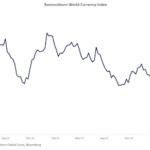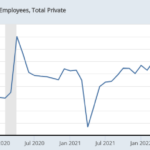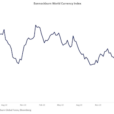
One of the main tenets at this space has been to cut away the extremes in your [equity] investing strategy. There are those who see market tops and imminent crashes everywhere, and then there are those who believe debt-financed share buybacks and dividend payments can continue to propel the market higher forever. They are both wrong, but the persistence of these two narratives and their interaction has been a key story in this cycle. It is my firm belief that the oscillations between these two positions have created a huge middle ground, which allows investors to make money. In the peanut gallery we talk about “sector rotation,” but it’s more than that. It’s also about different themes which cut across traditional equity sectors and allow for price movements of key industries—even country indices— in opposite directions. I suspect most market geeks would be able to agree on this over a pint in the pub. But can we quantify it? I suspect the first port of call for analysts would be to look at cross-asset correlations, and it certainly seems like something happened after the election last year. But I am not sure low cross-asset correlation is the smoking gun I am looking for. This indicator is mainly used as an argument for why macro traders should do well—they haven’t been able to exploit it so far—and in any case, it doesn’t appear as if cross-asset correlation has been systematically lower in this cycle. Rather, I would frame the key questions as follows;
1) Do equity sectors in this cycle exhibit lower—or higher—return variations than normal in this cycle?
2) Has individual sectors have been able to rise even as the overall market has declined in this cycle?
3) The flip-side of number 2 is whether the bull market in this cycle been more resilient to value destruction in individual sectors?
In order to answer those questions—which isn’t easy mind—I ran a number of studies using the S&P 500 as the benchmark index, and its GICS 2 sectors as my main sample. These exercises tend to be US centric simply because that is where the best data are. I think it would be worth examining these questions in other markets too. Crucially, I also think the evidence of divergence in global business cycles across regions and countries hints that this is not only an equity sector story. If you’re not into quantitative finance, leave immediately. Otherwise, please read on.
HAVE SECTOR ROTATION BEEN MORE PREVALENT IN THIS CYCLE?
For the first question, I created a diffusion index of three-month and 12-month returns on the GICS 2 sectors. The indices take a value of 1 if the absolute value of the returns is below 5% and 10% on a three-month and 12-month basis respectively. The chart below shows the fruit of that labor.














